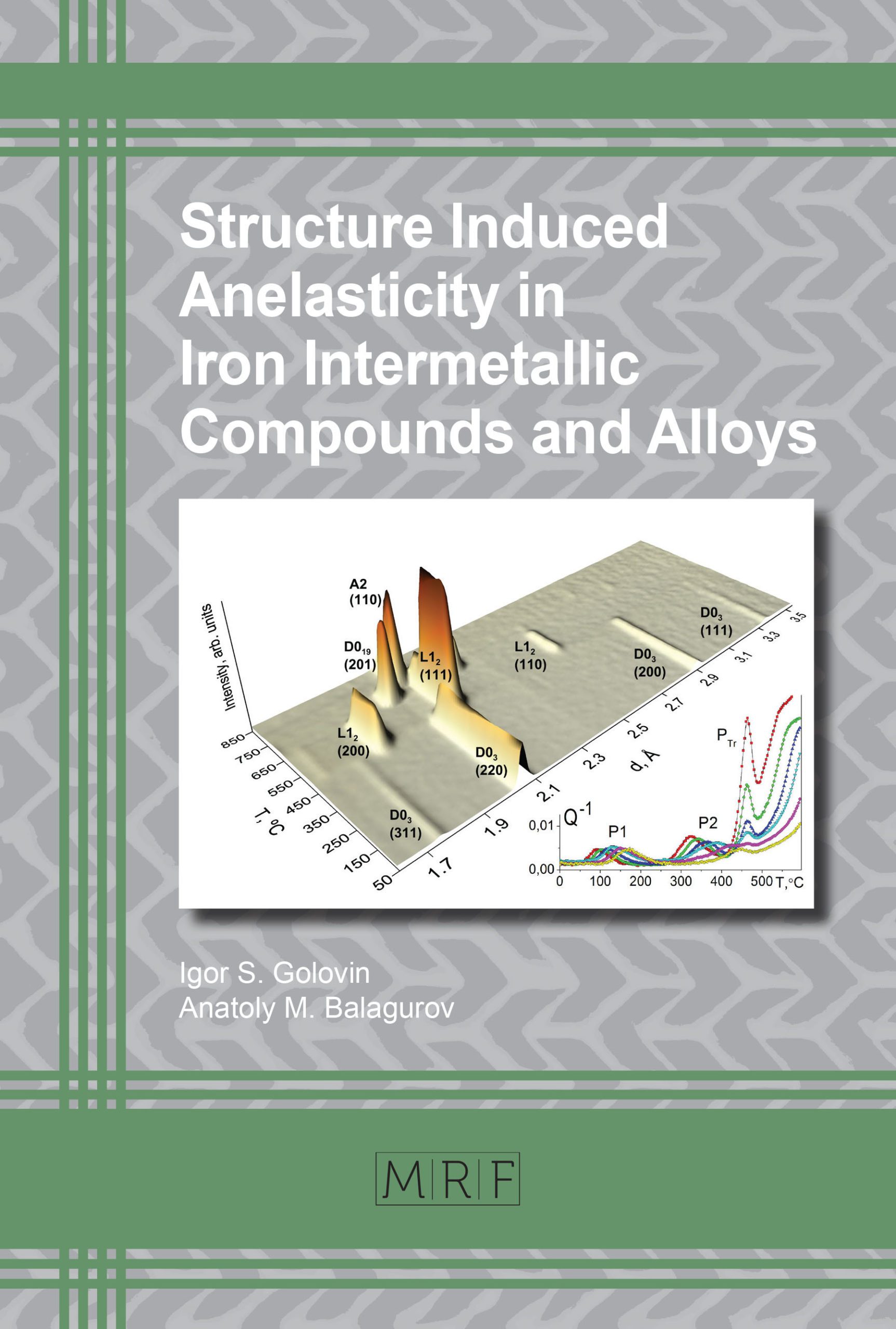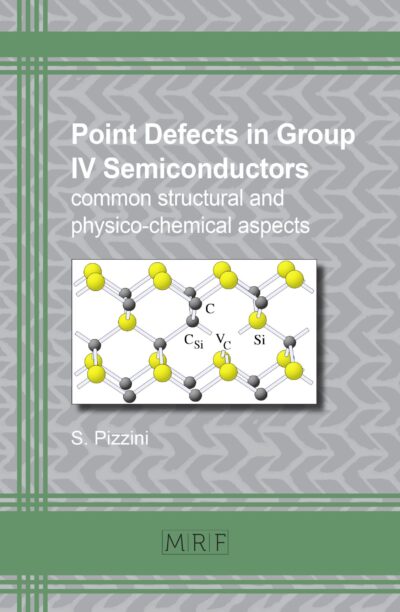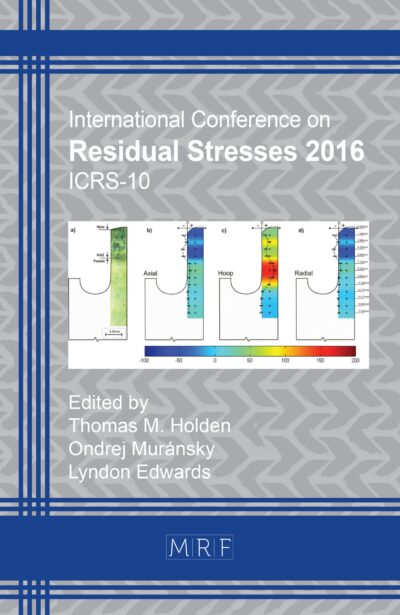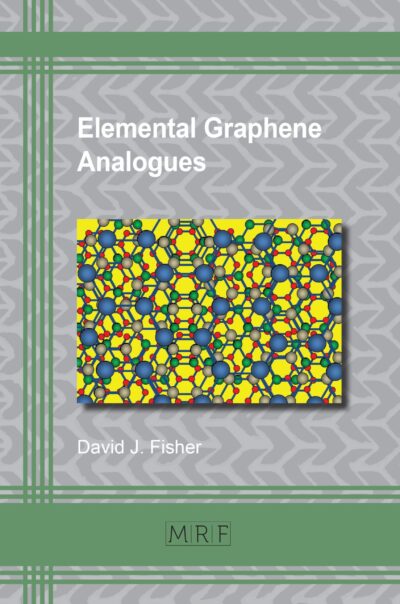Structure Induced Anelasticity in Iron Intermetallic Compounds and Alloys
Igor S. Golovin, Anatoly M. Balagurov
Materials Research Foundations Volume 30
Publication Date 2018, 256 Pages
Print ISBN 978-1-945291-64-7 (release date April 1st, 2018)
ePDF ISBN 978-1-945291-65-4
DOI: 10.21741/9781945291654
Different anelastic phenomena are discussed in this book with respect to iron-based binary and ternary alloys and intermetallic compounds of Fe3Me type, where Me are α-stabilizing elements Al, Ga, or Ge. An introduction into anelastic behavior of metallic materials is given, and methods of mechanical spectroscopy and neutron diffraction are introduced for the better understanding of structure-related relaxation and hysteretic phenomena.
To characterize structure and phase transitions – both first and second order – in the studied alloys XRD, TEM, SEM, MFM, VSM, PAS, DSC techniques were used. Considerable emphasis is placed on in situ neutron diffraction tests that were performed with the same heating and cooling rates as the internal friction measurements. Different types of mechanical spectroscopy techniques were used to study mainly, but not exclusively, Fe-Al, Fe-Ga and Fe-Ge based alloys: from subresonance “low” frequency forced bending and torsion vibrations (0.00001 to 200 Hz) to “high” frequency resonance (above ~200 Hz) free decay bending vibrations.
We discuss (1) thermally activated effects like Snoek-type relaxation, caused by interstitial atom jumps in alloyed ferrite, (2) Zener relaxation, caused by reorientation of pairs of substitute atoms in iron, (3) different transient effects due to phase transitions of the first and second order, and (4) amplitude dependent magneto-mechanical damping; especially with respect to structure, ordering of substitutional solid solution and phase transitions. Special attention is paid to magnetostriction of the alloys – the result of magneto-mechanical elastic coupling.
Keywords
Anelasticity, Damping Capacity, Magnetostricition, Structure Transitions, Phase Transitions, Fe-Based Alloys, Intermetallic Compounds, Mechanical Spectroscopy, In Situ Neutron Diffraction
https://en.wikipedia.org/wiki/Viscoelasticity#Types_of_viscoelasticity
ProtoView by Ringgold Clean Data
One of the most important physical phenomena in iron alloys and intermetallic compounds under cyclic loading is the damping of mechanical vibrations, which transforms the vibrations into heat. Golovin and Balagurov examine that phenomenon, focusing mainly but not exclusively on three systems: iron-aluminum, iron-gallium, and iron-germanium, including multi-component alloys and intermetallic compounds. After setting out their materials and method, they cover the structure and anelasticity of the three intermetallic compounds, anelastic relaxation mechanisms in iron and its alloys, and ternary iron-based alloys: structure induced anelasticity. Annotation ©2018 Ringgold Inc. Portland, OR (protoview.com)
Ringgold Keywords
Anelasticity, Iron intermetallic compounds, Iron-aluminum, Iron-gallium, Iron-germanium, Structure-induced anelasticity, Materials science, Damping mechanical vibrations














